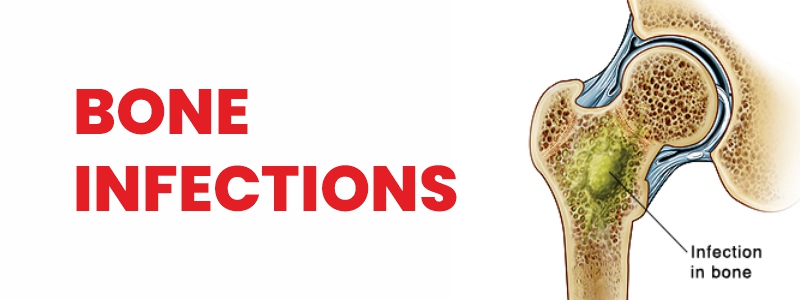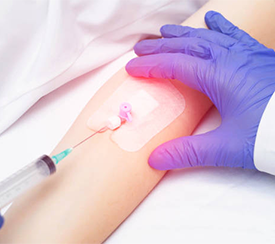Bone Infections, also known as osteomyelitis, is common among people. It is vital to diagnose it at an early stage for proper treatment. Bone infections can be a serious condition requiring prompt medical attention. Bone Infections treatment in India gives you an opportunity to recover quickly. Here are the details of the causes and symptoms of bone infection.

Causes of Bone Infection
Infections caused by bacteria or fungi
Most bone infections are brought on by bacteria like Staphylococcus aureus. Even though they are less frequent, fungi infections can cause bone infections, especially in those with compromised immune systems.


Open Wounds or Injuries
Surgical operations, open fractures, or trauma that exposes the bone to the outside environment can create a pathway for bacteria or fungus to infiltrate and infect the bone.
Bloodstream Infection
An infection already exists in another region of the body to the bones through the bloodstream.


Chronic Diseases
The chance of having bone infections in India might be raised by some chronic diseases like diabetes or peripheral artery disease.
Prosthetic
Diseases in artificial joints, such as hip or knee replacements, can develop due to germs entering the joint during surgery or other diseases in the body.

Symptoms of Bone Infections
The symptoms of bone infection can vary depending on the severity and location of the disease. Common signs and symptoms may include:
Intense pain in the affected area
Swelling, warmth, and redness at the site of infection
Limited range of motion in nearby joints
Fever, chills, and fatigue
Pus or drainage from an open wound or surgical site
Difficulty bearing weight or walking
Identifying a Bone Infection
Diagnosis of Bone Infection
To diagnose bone infections, a combination of physical examination, medical history review, and diagnostic testing, such as:
Imaging tests, such as X-rays, bone scans, CT scans, or MRI scans, can assist in locating infection-prone regions in the bones and gauge their severity.
Blood tests: Complete blood count (CBC) and blood cultures can find infection-related symptoms and the particular bacterium or fungus causing them.
Biopsy: To confirm the existence of an infection and identify the best course of action, a sample of bone tissue may occasionally be obtained for laboratory testing.
Treatment Options for Bone Infection
Bone infections are often treated using a multidisciplinary strategy, including medical experts from different specialities. Treatment choices might be:
Antibiotics: Antibiotics can be given orally, intravenously, or directly into the bone using a catheter, depending on the kind and severity of the infection.
Surgery: To remove contaminated tissue, drain abscesses, or stabilise fractures, surgery may be required. The infected bone may occasionally need to be removed or replaced with bone transplants.
Supportive Care: To speed up the healing process and help the body return to normal function, the treatment plan may include pain management, wound care, and physical therapy.
Prosthetic Joint Revision: If a prosthetic joint becomes infected, a replacement prosthesis may need to be implanted.

Conclusion
Cataract complications may result if a bone infection is not immediately identified and treated. It's critical to consult a doctor if you have a bone infection or exhibit signs of one. With Dr. Avtar Singh, early detection and care can lessen risks and hasten a full recovery. A healthcare expert should always be consulted for advice and direction on your unique circumstances. You can also consult with Dr. Avtar Singh for orthopaedic treatment of foreigners, he is keen to help and eradicate this problem from your life.